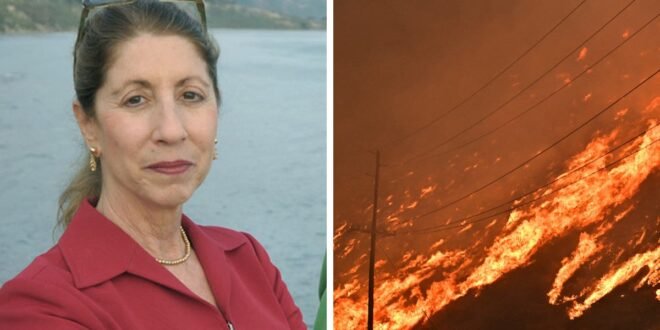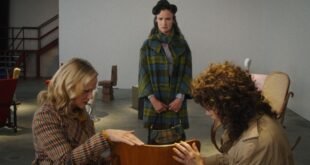The deal was sealed on a drive along Sunset Boulevard, an asphalt wonder spanning 22 miles. Arriving at the Pacific, I glimpsed toothpaste-white sand beaches the width of football fields, bolted from the rented VW bug and ran into the sea. Afloat in the summer-warmed Pacific, I melted into a puddle of tears.
I was 18 and born-again: a California girl.
Though I would continue shuttling back and forth to New York City for work and life, I knew I was done with frigid winters and dreary weather. Admittedly, there was the necessary escape from family and other woes. I needed every one of those 3,000 miles as a buffer. It’s not called the City of Angels for nothing.
L.A. promised more than escape. Reinvention is the coin of the realm. In L.A., you could change your name, change your story, change your life. The entertainment business — The Industry — was created by escapees for escapees.
I had come to L.A. on summer break from NYU. I confess I was confused as to where the airport ended and the city began on the drive out of LAX on La Cienega Boulevard. (Also true La Cienega means swamp in Spanish, fair warning about possible impermanence.)
By week’s end, l knew the haunts of the Sunset Strip: The Roxy, The Committee Theater and Turner Liquors — the source of all elixirs and solace and where you could bump into Jim Morrison.
In L.A., cars were kings whether VW vans or Bentleys, Sunset Boulevard was better than Route 66 and speed (velocity, and for some, the pills) the drug of choice. Just west of the Strip, Sunset breaks into the green-scape of Beverly Hills, the flats on one side, the canyons on the other. Street signs announced themselves in melodious Spanish: Cielo, Angelo, Rodeo, Loma Vista, Moreno. Each bend of Sunset delivered another wonderland of towering palms plucked from the pages of Dr. Seuss: Beverly Glen, gated Bel-Air, the sprawling UCLA campus, straight on through luxe Brentwood.
Just past the deep curve of Sunset Boulevard cradling Will Rogers State Park, I arrived at the Pacific Palisades, a village of Wally Cleaver-family perfection. Not the oversized mansions of Bel-Air nor the sun-beaten stuccos of the Hollywood flats, but what, at first glance, was an upper middle-class neighborhood with kids shooting baskets in driveways. Rolling up into the hills on a carpet of green lawns, its southwestern flank was chockablock with shops, a church, a synagogue, and a spectacular school campus on Temescal Canyon Road, the iconic Pali High (a magnet school that my nephew, living in the Hollywood flats, later attended). One might measure the degree of the Palisades’ bliss by the naming of its main drag, Via de la Paz. You just knew that Jimmy Stewart and Donna Reed – well, all the cast of “It’s a Wonderful Life” – lived here.

Nearly two weeks out from the onset of flames, the Pacific Palisades’ universe of aspiration and perfection is memory. Vast swaths of Malibu and historic Altadena are gone. Incinerated and looking like Dresden in the final month of World War II. Last night, another warning that the demonic Santa Ana winds have a hot blast in the offing, or as the Los Angeles Times headline put it, “Threat of Extreme Weather.”
Weltschmerz – world sadness – described the depth of mourning after WWII. With 40,000 acres turned to cinders, dozens dead or missing, Angelenos know something about that as well.
****
Admittedly, I ran with a fast crowd and a series of Mr. Wrongs that carried me into virtually every cranny of sprawling L.A. I spent months ensconced at the Landmark Hotel, rock ‘n’ roll central on Franklin Avenue (naturally, Janis Joplin and Alice Cooper were neighbors in adjoining suites); a stint in a modest Silver Lake clapboard said to have been the residence of a fading Rita Hayworth; there was a small Craftsman with a front porch in the parched Hollywood flats south of Sunset; a Spanish colonial not far from Lake Hollywood we called Golly Go; and a guesthouse on Gardner Street not far from Didion and Dunne’s A-List party house (and a stone’s throw from where Lenny Bruce prematurely shed his mortal coil).
Later, there was an upgrade into the renovated basement of an ode-to-God mansion bordering Beverly Hills. A young couple lived on its upper floor – a good looking longhair with pulsating eyes named Dennis and his gorgeous hippie girlfriend. Dennis never seemed to sleep and said he was editing a movie he made with his friend Peter. Did we want to see some footage, he asked through long inhales of an oversized joint. He was thinking of calling it “Easy Rider.”
There was a stay in Topanga Canyon, a romance in Malibu flats and another in a stilt-sited clapboard on the PCH – and even a stint in adjacent Ventura. In the 1980s, there was a long summer residence at the ranch house of a hard-drinking film producer, a 10-minute walk to Will Rogers’ historic home.
In every corner of L.A., it seemed New Yorkers were reinventing themselves. On a commune of sorts called The Farm on Barham Boulevard near the Warners lot, you could find musician John Sebastian (of the Lovin’ Spoonful), rock photographer Henry Diltz, and some of the wise guys who started The Fire Sign Theatre and later the Credibility Gap, precursors to “Saturday Night Live.” A soulful gal named Annie Thomas was always messing around with large barrels of steaming tints and dyes. Soon everyone on the rock scene was wearing Tye Dye Annie’s psychedelic fashions. You could sit and pour your heart out to Annie and know she was a tomb for your secrets and a hug for your heart.
In case we forgot, there was always Joan Didion reminding us, unceasingly, that we lived in a tinder box … So yeah, we knew.
Not all the girls on the scene were going to be your pal. Two would inevitably sleep with your boyfriends: Janis Joplin and writer Eve Babitz, then a collage artist known for her self-proclaimed “bodacious boobs.” Neither was a standout looker in the land of glam blonde slenderness but countered with outsize talent, grit and appetite. They loved L.A. — loudly!
The big L.A. bonus for me – a young reporter who had covered punk star Sid Vicious’ murder trial – was the city’s spectacular one-of-a-kind crime. What screenwriter could dream up the plot and cast of the Manson Murders? Or Ronald Reagan’s best pal, Alfred Bloomingdale, being suspected of murdering — wait for it — his S&M mistress? Or Robert Evans’ coke-queen girlfriend masterminding the Cotton Club Murders? Or a well-born, closeted Pasadena neurologist watching “Double Indemnity” on TV with a young hustler, then doing it(!), killing a hapless pick-up for a million-dollar insurance payday. (And yes, ending up as a three-part series in Vanity Fair by yours truly.)
There was so much savory crime in L.A. that when Jay Levin started L.A. Weekly, I became its first Crime Editor. The late great Mike Davis also wrote for the Weekly and his 1998 book “Ecology of Fear” was the clarion call of the city’s inherent flammability. The Chumash and Tongva Indians, Davis reminded us, annually set the hills of Pacific Palisades and Malibu ablaze to clear the dead brush certain to ignite. In case we forgot, there was always Joan Didion reminding us, unceasingly, that we lived in a tinder box.
So yeah, we knew.
Like most Angeleno converts, I kept exploring L.A.’s adjacent wonders – its deserts, mountains and islands – and found a second refuge. The FAX machine, internet and later Zoom meant you could come into the city for work and pals, bypassing its daily freeway snarls.
But wherever you go in Southern California, the one thing you can’t escape is fire. There’s no city, municipality or county in SoCal that has not burned. The 1973, Sycamore Canyon fire decimated parts of Santa Barbara, followed by the 1990 Painted Cave Fire, the Tea Fire, and the Jesusita Fire. Until the Palisades Fire, the mother of all infernos was the 2018 Thomas Fire that ravaged Ventura and Santa Barbara counties, nearly surpassing the record-setting Santiago Canyon Fire which leveled 300,000 acres in 1889.
For me, California fires have meant eight evacuations. Yup. Eight. Eight flights in the ember-lit snow-ash nights, staying with family, friends or in hotels. And if it rained afterwards, that meant mudslides, equally deadly. Seven years ago – about the same day that the Palisades fire razed the town – 23 residents were washed away in the mudslides that crashed over Montecito.
For the time being, the exodus has reversed. Highway 101 had been chockablock with L.A. fire refugees fleeing north. But that can change on a dime. A few days after Altadena burned, a fire broke out in the Ventura River Basin, quickly jumping to 55 acres before containment.
A desire to understand impermanence inspires millions to study Buddhism, mindfulness and all else. For the actual experience of it, come to Southern California.
Impermanence. Denial. OK. But I still love L.A.
A.L. Bardach, a former reporter for Vanity Fair, won the PEN Award for Journalism and is the author of “Cuba Confidential” and “Without Fidel.”
Source link





